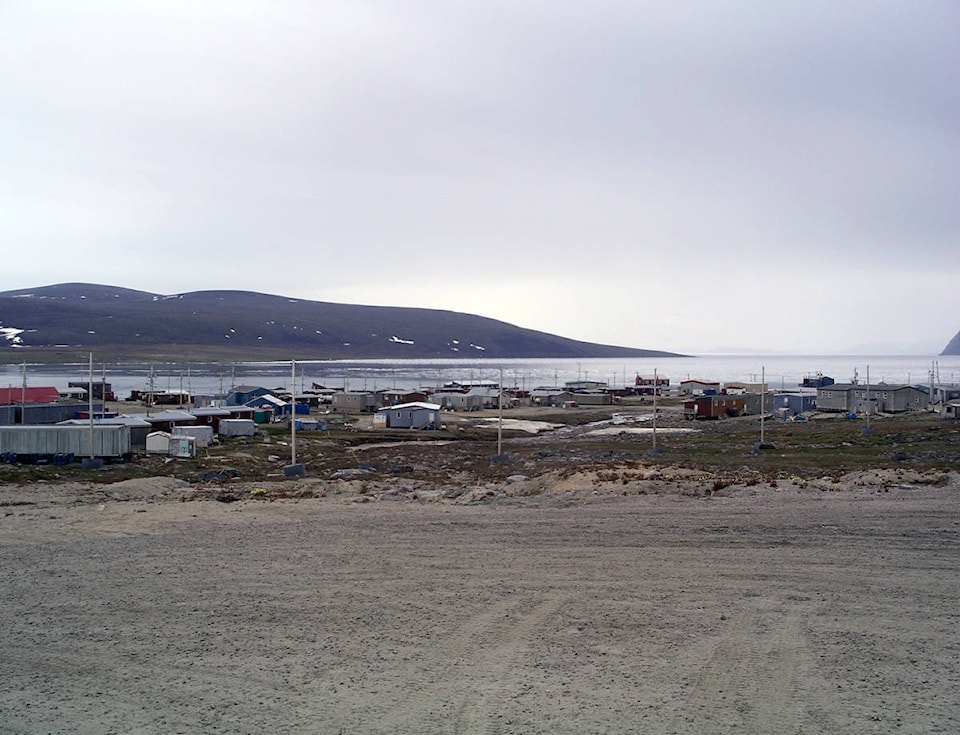To get a better understanding of changes in marine life, underwater sounds near Clyde River will soon be recorded.
The Canadian icebreaker and research vessel Amundsen is expected to arrive in Clyde River later this month to assist with the deployment of two 59-kilogram acoustic recorders and moorings, which will be placed at the ocean bottom to the north and south of the community in locations approved by the hamlet and hunters and trappers organization. The listening devices do not emit any sounds.
Mayor Jerry Natanine came up with the idea during the successful campaign to prevent seismic testing offshore from Clyde River. Although the Hamlet of Clyde River won that court case in 2017, Natanine realized how valuable it would be to have baseline acoustic data on narwhal, beluga, walruses, halibut and other creatures. It’s information the government didn’t have, he said.
Increasing shipping activity, particularly associated with Baffinland Iron Mines’ Mary River project, is another reason why underwater sound monitoring is important, said Natanine.
“Basically any type of noise that is not natural to our area is what we want to listen to… the hunters are already saying the narwhals migration has changed,” he said, adding that the sea mammals arrived about two weeks later than usual last fall. “We understand all the rest of the factors, like climate change and all this. We’re not solely blaming the ships for that. We want to be clear in our knowledge, and when we lay blame, we just don’t want to blame anyone with no backup. That’s one reason why we want to have all this sound data.”
The community’s Ittaq Heritage and Research Centre – which undertakes research, land-based programming and multimedia – will handle the collected acoustic data and share it with a scientific consulting services company in Halifax for further analysis. Inuit Qaujimajatuqangit will also be considered.
A few local trainees are already engaged.
“We’re hoping this could become a long-term project,” Natanine said. “These things will be beneficial for training and employment purposes.”
The funding for the two-year pilot program is coming through Inuit Tapiriit Kanatami’s Inuit Nunangat Research Program.
“They’ve been very, very supportive,” Natanine said of ITK.
Four Ittaq staff will be transported by helicopter to the Amundsen for a day when the icebreaker arrives.
“Being on the ship and working together with the Amundsen scientists will be great experience for Ittaq staff, and vice-versa , in addition to the logistical support of getting equipment in the water,” stated Shari Gearheard, a researcher and geographer based in Clyde River.
There will also be a land and ocean mapping project – carried out by drones – that will take place with help from the Amundsen crew, Natanine added.
Baffinland recently announced that it won’t conduct any icebreaking in Eclipse Sound – near Pond Inlet and north of Clyde River – this summer. Natanine said he was “very happy to hear that.”
In 2021, Baffinland anticipates up to 202 transits – accounting for trips to and from destinations – in Nunavut’s waters. The majority of those – up to 152 – will involve ore carriers. Tugboats, resupply cargo vessels, fuel tankers and icebreakers will be the other types of ships.
The mining company has its own narwhal monitoring program that encompasses acoustic-based monitoring, satellite tagging; ship, shore and drone-based behavioural monitoring and aerial surveys.
With a lower than usual number of narwhal observed in Eclipse Sound in 2020, Baffinland presented several possible reasons for the reduction in numbers such as heavier ice conditions, increased icebreaking, more killer whales and pile driving for a new small craft harbour in the community.
“Based on currently available data, it is not possible to determine whether one of these factors alone was the source of the decline, whether the combined influence of one or more of these factors was responsible, whether another unknown factor was the cause, or whether the observed change was natural in occurrence,” Baffinland stated, adding that its research indicates that open-water shipping has no significant lasting impact on narwhal.
